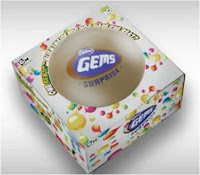What Marketers Should Know About Customers
Originally published here in Adclubbombay.com
The dictum “Understand your consumers “has often become a cliché. It is not a new idea but it is the most forgotten idea. When sales are growing at tremendous pace and when the production is struggling to meet the demand from the market, consumer is pushed to the backyard. During periods of economic boom companies focus is on expansion, diversification, new offices, mergers and acquisitions. But then suddenly out of the blue, everything comes to a grinding halt. Growth stopped, inventory piled up and consumers stopped crowding the stores. Now is the time to bring back the consumer to the centre of your business strategy.
It is said that the seeds of disaster is sowed during the time of growth and optimism. Take the case of realty sector. This is the sector which was most affected by the current slowdown. When the industry was growing at a scorching pace, every one forgot the consumer. Prices were skyrocketing not because of real consumer demand but because of speculation. Many players cared little to understand whether the consumer is actually buying or is it a mere speculation that is driving the price. When the realisation came that real consumers are not buying, everything came to a standstill.
This current slowdown in the economy is a lesson for all marketers to go back to common sense. The common sense that consumer is the centre of business. The purpose of business is to create consumers. And to do that one should know the consumers.
Who is your customer?
Although this question sounds too basic and simplistic, it is surprising to know that many businesses do not have a basic definition of their customers. The era of mass marketing where the marketer treats the entire market as a homogeneous group is over. The market has moved drastically into different segments.
Consumer’s knowledge about offerings has also changed. This new set of empowered knowledgeable consumer has warranted that companies be more empathetic to the needs and wants of the consumers.
Marketers should have a thorough understanding about the consumer. The first step is to clearly define the consumer. The definition of consumer should be exhaustive and not be limited to a mere demographic picture. The mental, physical, emotional and social dimension of the consumer should be clearly stated by the marketer.
What does the consumer need?
Once the customer definition is clear, the next task is to map the needs of the consumer. This is not a static process because consumer needs and priorities keep changing. Hence there has to be a continuous mechanism through which these changes are absorbed into the learning systems of the company. In an advertising agency perspective, increasingly companies are cutting their media expenses. That does not mean that the need for promotions has died. When advertisers look for new cheaper methods for promotions, agencies should be in a position to help them. This can happen only if the agencies have a better understanding of the consumer’s changing needs.
Understand Customer’s customer
In the remarkable book “What the customer wants you to know “, management guru Ram Charan says “The most important thing to understand about your customer is her customers”.
The customer’s customer principle has wide application in business marketing. For an advertising agency, the customer’s customer is the consumer. For a business firm, it will be the customer of the client. If a marketer wants to clearly understand the customer needs, he has to first identify the customer’s customer and customer’s competitor. While many consumer firms clearly map their customers and competitors, business markets fail to understand the significance of this understanding. Because if the customer’s customer stops buying products, then your customer will stop buying from you.
From market driven to market-driving
Consumers will not be able to tell you exactly what they want. But a deep understanding about their life and their behaviour will give valuable inputs about new product ideas. Market –driving strategy is the strategy where the company shapes the consumer needs and wants through break through products and technologies. Hence it is important for marketers to go beyond what the consumer is saying.
Market Driven strategies are the conventional reactive strategies. Companies react to the changing marketing conditions using various marketing mix elements. The focus is on satisfying the obvious stated needs of the consumers. Market Driving strategies are aimed at creating original products and shaping consumer needs. The needs may be hidden and marketers should have the guts to tap those hidden needs.
Steve Jobs is quoted to have said that he does not believe in market research. He famously said that “We just want to make great products “. Here the focus is more on shaping the consumer needs and wants rather than reacting to existing needs. In a market driving strategy, the focus is to create new customers rather than satisfying existing customers. But for that one has to understand the hidden and latent needs of the consumers.
Constant consumer conversation and engagement will help marketers to understand those needs and find means to satisfy those needs profitably.




